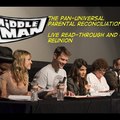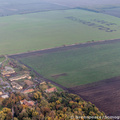Ki mondta, hogy a tudomány csak száraz és unalmas lehet? Ki mondta, hogy 2-3 év kutatómunkáját csak 20 perces nyögvenyelős előadásban és 80-100 emészthetetlen oldalon lehet prezentálni? *
Íme egy kezdeményezés, ami megmutatja: Lehet Más a PhD. Melegen ajánlom a hazai doktori iskolák figyelmébe.
*A jelenlévők persze kivételek
A versenyről itt lehet többet olvasni.
A hajtás után további izgalmas táncok mikrotubulusokkal, a vörösvértestek és fotonok interakciójával, és néhány fontos újdonsággal a Rhynchosporium secalis-ról. Csak ma! Csak nektek! A szerzők magyarázataival!
A nagy mikrotubulus-katasztrófa:
"In this dance, we depict the growth and catastrophe of microtubules (coming from the left) by walking to the right toward an imaginary cell edge. For a while, we make good progress, but then a catastrophe happens and we rapidly retreat. Later, the cell boundary, defined by treadmilling actin filaments (coming from the right), collides with the growing microtubules and also causes catastrophes. This dynamic continues and defines the constant state of flux of microtubule growth and catastrophe. "
Miért nem járnak napozni a vörösvértestek:
"In my thesis, the developed computational simulator analyzes the interaction of photon and various single RBC behavior. Then total photon propagation in real blood during thrombogenic process is revealed based on the simulation. Although observer (optical device) cannot view RBC behavior directly from outside of body, it can count backward photon propagation one by one. Based on the revealed relationship between photon propagation and RBC, observer estimates the blood condition. When observer obtains eccentrically located photon propagation or very sharp signals, it alerts the degree of risk to thrombus. Finally, if there is my thesis ....., she can receive the alert, and then she will overcome heart attack and be smile!! :D"
Magyarul egyszerűen csak Rinkoszpóriumos foltosság:
"Rhynchosporium is a fungal disease of barley. It grows symptomlessly at first but once established can be highly damaging to the crop. It grows through the barley leaves as a network of thread-like hyphae, and forms spores that spread through the crop by splashing raindrops. ...
My work has shown that some Rhynchosporium populations have become less sensitive to some older fungicides. Other fungicides are still effective, but resistance management guidelines should be followed to prevent the fungus from becoming resistant to these fungicides too. "




